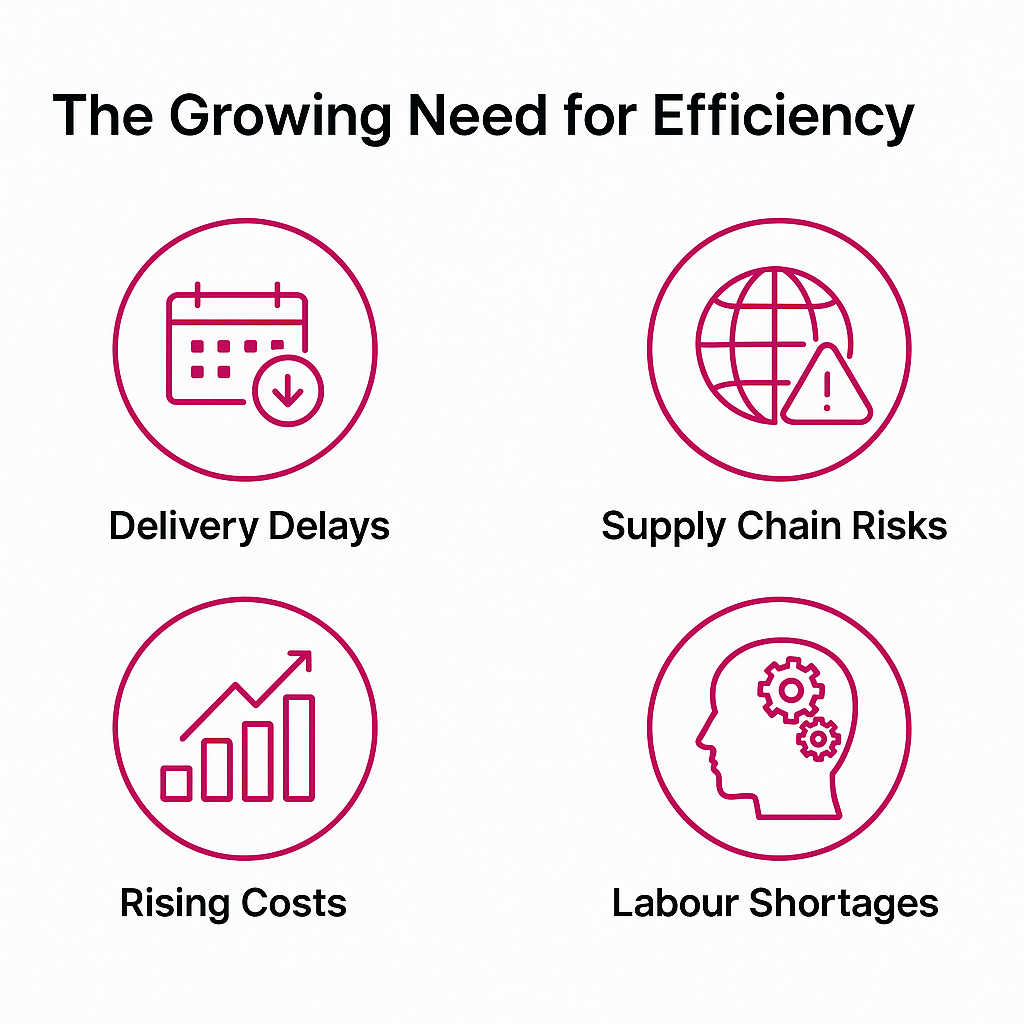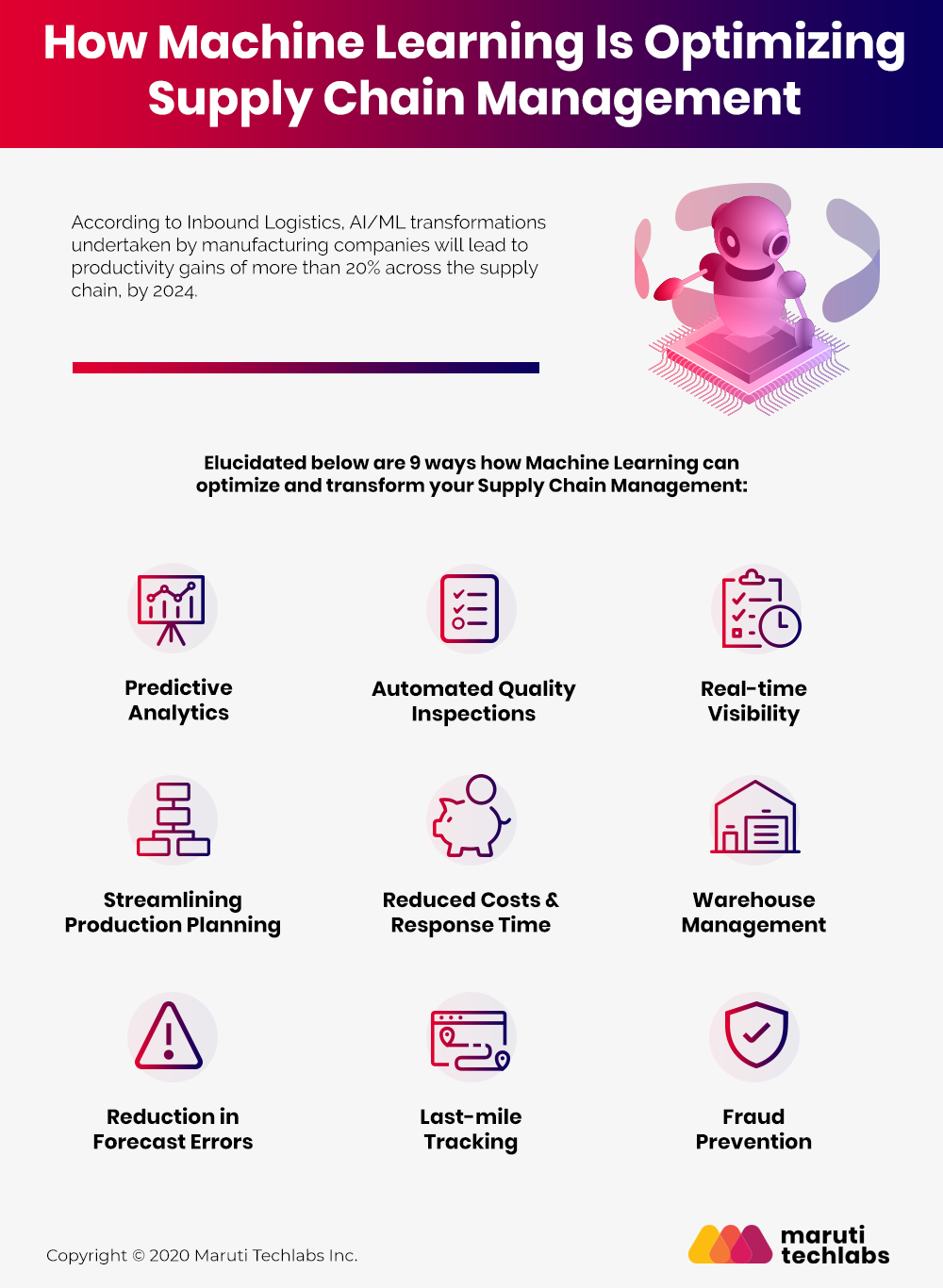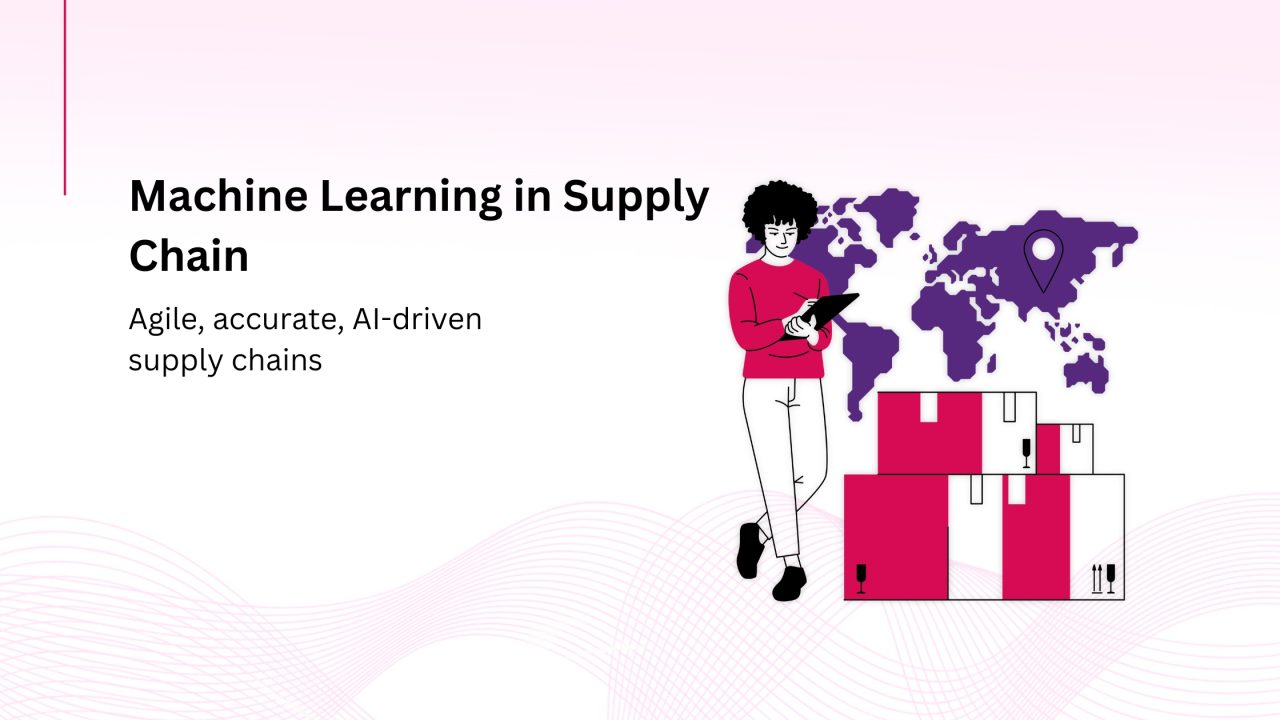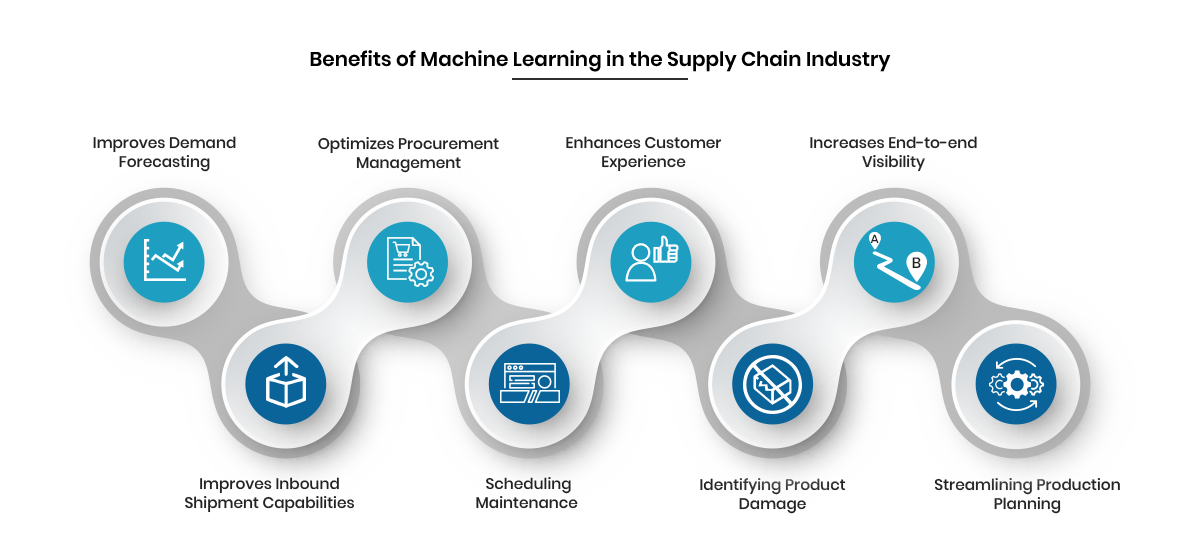Supply chains today are under more pressure than ever. With fluctuating consumer demand, global disruptions, and tighter delivery timelines, businesses must become faster, more resilient, and more accurate. Machine learning (ML) has emerged as a core driver of this transformation, turning supply chains into intelligent, responsive systems.
In this article, we explore how ML enables operational excellence, smarter forecasting, and continuous improvement in modern supply chains.
Understanding Machine Learning in Supply Chains
Machine learning is a subset of artificial intelligence that enables systems to learn from data and improve performance without explicit programming. Within the supply chain, ML powers everything from dynamic forecasting to predictive maintenance, offering unparalleled agility and accuracy.
By processing vast amounts of structured and unstructured data, ML uncovers patterns, identifies risks, and automates decision-making across procurement, warehousing, logistics, and fulfilment.
The Growing Need for Efficiency
Today’s supply chains span countries, time zones, and digital ecosystems. Businesses face ongoing challenges:
- Volatile demand and market conditions
- Pressure to reduce operational costs
- Complexity of supplier networks
- Growing customer expectations for speed and transparency
- Environmental and regulatory concerns
Efficiency is no longer about reducing cost alone—it’s about building smarter, adaptive systems that evolve with change. Machine learning meets this need head-on.

“According to McKinsey, companies that use AI-enabled supply chain management can reduce logistics costs by 15%, improve inventory levels by 35%, and boost service levels by 65%. Deloitte also reports that 45% of supply chain executives plan to invest in AI and ML to enable more accurate planning and forecasting.”
Powerful Use Cases of Machine Learning in Supply Chains
Predictive Demand Forecasting
ML algorithms assess historical sales, seasonal trends, market fluctuations, and even external data like weather to accurately forecast demand and reduce wastage.
Inventory Management and Replenishment
Machine learning models optimise stock levels based on usage patterns, lead times, and expected demand—minimising excess inventory and avoiding stockouts.
Dynamic Procurement and Pricing
ML supports smarter sourcing decisions by analysing supplier performance, pricing trends, and delivery timelines. It also helps fine-tune pricing strategies based on demand elasticity.
Intelligent Transportation Planning
Real-time traffic, weather, and fuel data feed into ML systems to find the fastest, most economical delivery routes while balancing customer commitments.
Proactive Risk Monitoring
ML detects early warning signs of disruption, such as delayed shipments, quality deviations, or geopolitical instability—allowing for agile responses.
Visual Inspection and Quality Control
Computer vision integrated with ML identifies product or packaging defects automatically on the production line, improving consistency and reducing returns.
Industry-Wide Examples of Impact
- Retail: Amazon uses ML to power delivery forecasts, warehouse layout design, and customer demand sensing.
- Manufacturing: Siemens leverages ML for spare parts prediction and predictive maintenance.
- FMCG: Unilever applies ML models to align production schedules with real-time shelf demand.
- Pharmaceuticals: Global pharma leaders use ML to maintain cold chain integrity for life-saving drugs.
These success stories highlight how machine learning delivers not just speed, but precision and scalability.
Business Benefits of ML Adoption
- Sharper demand forecasting and reduced stock obsolescence
- Streamlined inventory and faster fulfilment
- Smarter sourcing and reduced supplier risk
- Lower transport costs through optimised routing
- Greater customer satisfaction with better service levels
- Enhanced visibility across the supply chain
- Faster adaptation to market changes
Common Barriers and Practical Solutions
Data Quality Issues
Solution: Clean and centralise legacy data; use real-time IoT inputs where possible.
System Incompatibility
Solution: Deploy API-driven or cloud-native ML solutions that integrate easily with ERP/WMS systems.
Cultural Resistance
Solution: Launch internal pilot projects to build confidence; train teams to use AI tools effectively.
Perceived High Costs
Solution: Start with high-ROI areas like forecasting or routing. Prove value quickly, then scale.

Emerging Innovations Shaping the Future
- Self-learning supply ecosystems that auto-adjust to variables without human input
- Generative AI to simulate supply chain scenarios and recommend plans
- Integration of blockchain and ML for traceability and compliance
- Greener logistics powered by sustainability-focused ML models
- AI digital twins to test strategies in virtual environments
Starting Your ML Journey with Confidence
- Define strategic priorities (e.g., reduce lead time, boost fulfilment rates)
- Assess digital maturity and available datasets
- Select a focused ML use case with measurable ROI
- Choose a vendor or partner experienced in supply chain ML
- Measure performance and iterate based on results
How Cosnet Adds Value
Cosnet delivers customised machine learning solutions tailored to your supply chain goals. Whether you’re improving route planning, enhancing inventory turnover, or building smart dashboards, our team helps you adopt ML with confidence.
Explore our portfolio or contact us today to learn how we bring real results through intelligent automation.
Conclusion
Machine learning is the future of supply chain performance. It empowers businesses to navigate uncertainty with confidence, reduce costs without compromising quality, and deliver better service to customers.
As supply chains grow more complex, the companies that integrate intelligence into their operations will set the standard for speed, accuracy, and innovation. Cosnet is here to help you lead that change.
Frequently Asked Questions
Is machine learning suitable for small and medium businesses?
Absolutely. ML is scalable and can be applied in targeted areas—like demand forecasting or procurement—to deliver measurable improvements without large infrastructure investments.
How does ML differ from traditional analytics?
Traditional analytics use static models and historical averages. ML systems learn and adapt, continuously improving their accuracy as more data becomes available.
What data is needed to get started?
Key inputs include sales history, supply chain logs, real-time delivery and inventory data, supplier records, and contextual data like weather or traffic.
When can I expect results from ML?
Pilot projects in areas like route planning or demand prediction often show impact within 3 to 6 months.


